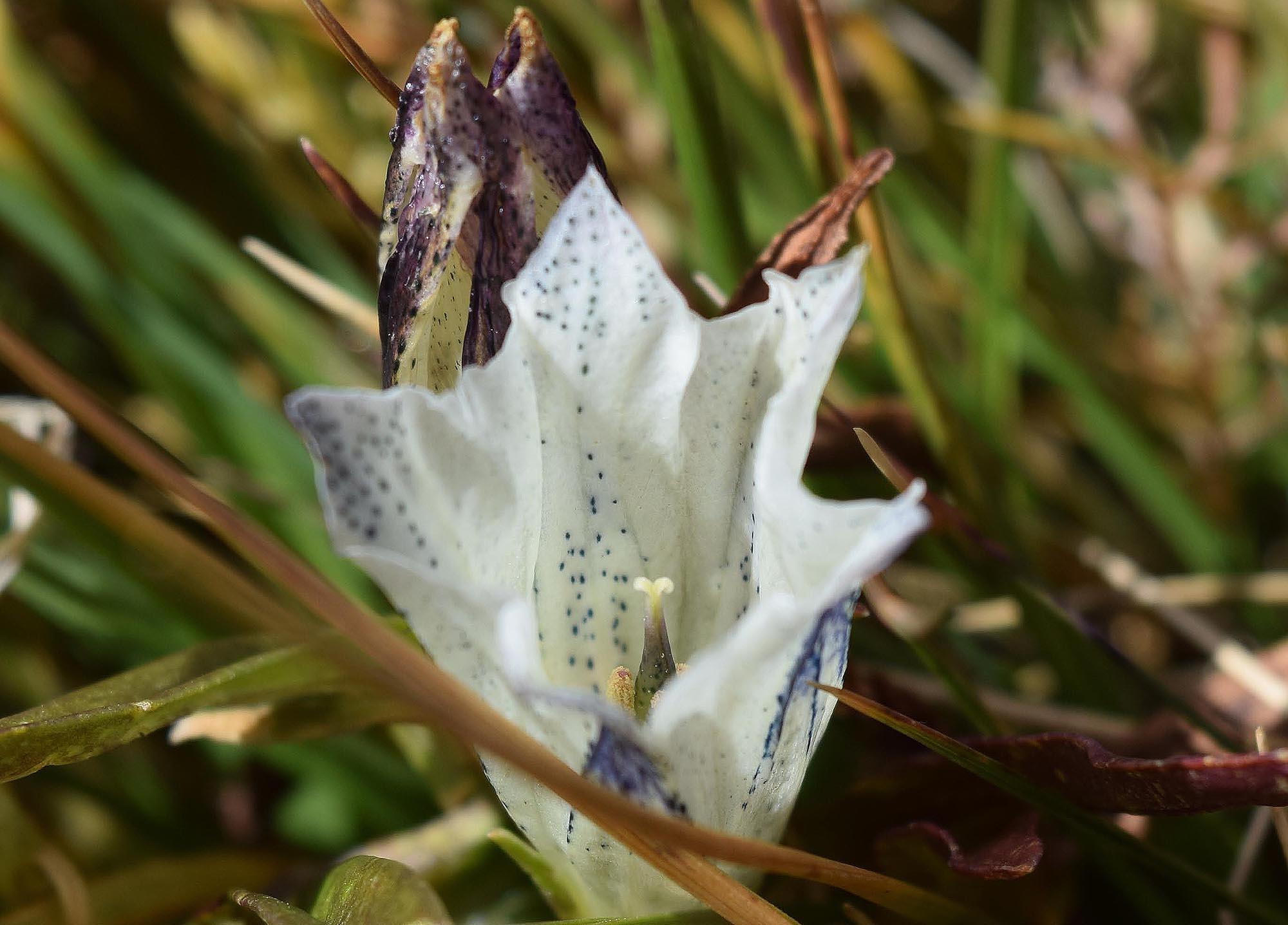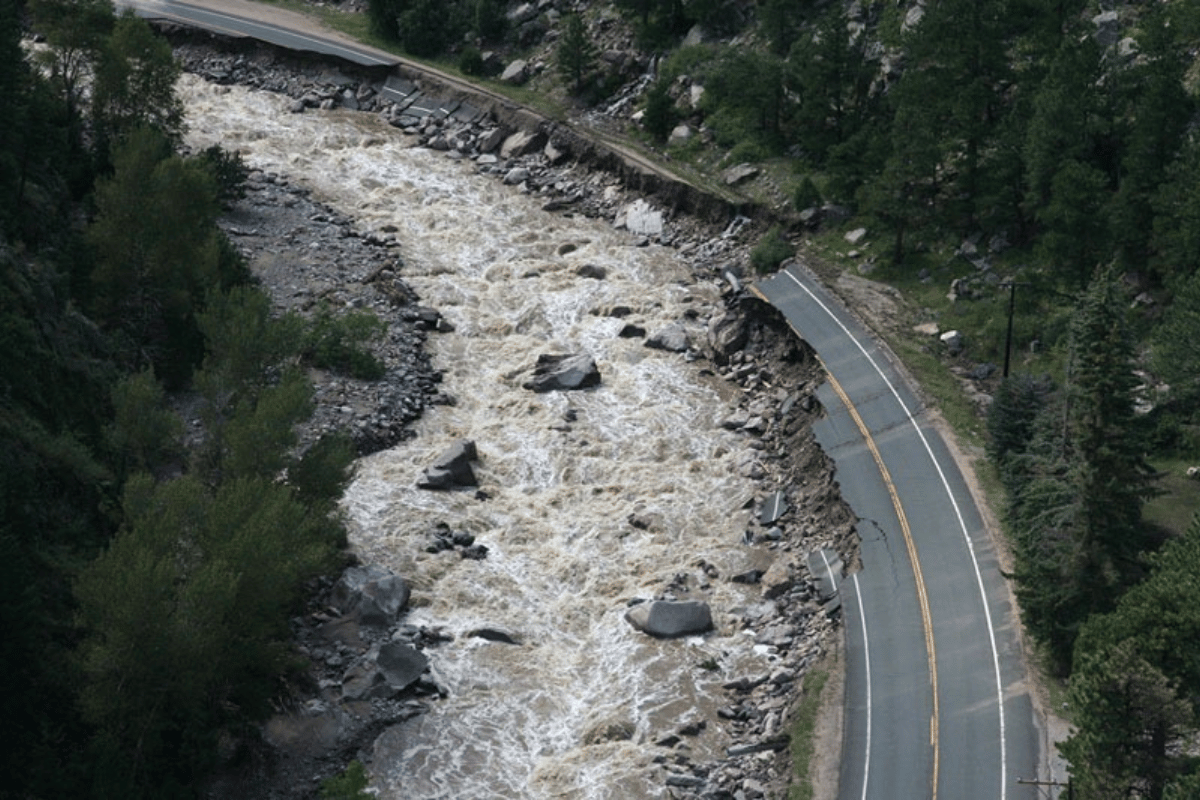
 This story originally aired September 29, 2015. Trail Ridge Road has been called one of the most scenic natural wonders of the world. Soaring above Rocky Mountain National Park, it's also the country's highest continuously paved road -- peaking at over 12,000 feet. At this time of year, with the Aspens turning gold, snow starting to frost the highest peaks and the elk rut in full swing, it's an especially resplendent experience.
This story originally aired September 29, 2015. Trail Ridge Road has been called one of the most scenic natural wonders of the world. Soaring above Rocky Mountain National Park, it's also the country's highest continuously paved road -- peaking at over 12,000 feet. At this time of year, with the Aspens turning gold, snow starting to frost the highest peaks and the elk rut in full swing, it's an especially resplendent experience.
Related: Colorado's National Parks Feel A Funding Pinch

 Lakewood author Amy Law has had a fascination with the highway since her youth. She even earned a master’s degree to better understand the natural history of Trail Ridge and its unique eco systems. Her new book, "A Natural History of Trail Ridge Road" takes readers on a step by step tour of the highway explaining both its well-known features and its hidden gems. Here are Law's seven tips to get the most out of your Rocky Mountain National Park visit:
Lakewood author Amy Law has had a fascination with the highway since her youth. She even earned a master’s degree to better understand the natural history of Trail Ridge and its unique eco systems. Her new book, "A Natural History of Trail Ridge Road" takes readers on a step by step tour of the highway explaining both its well-known features and its hidden gems. Here are Law's seven tips to get the most out of your Rocky Mountain National Park visit:
1. Ditch the screens:
Just for a few minutes, turn off your cell phone, your iPad, your camera, whatever. Electronic goodies feed our mind’s need to be constantly in motion, but when spinning, the mind doesn’t focus well. So take 10 minutes and do nothing: Don’t check Twitter. Don’t look for a good photo. In fact, don’t talk, don’t plan ahead. Just look, listen, smell and feel. Absorb the experience of being on top of the world. If you can do this, you will remember these sensations better than all the selfies of the entire trip.
2. Slow down:
 Despite all you hear about bagging all of Colorado's Fourteeners or hiking the Appalachian Trail in record time, your visit to Rocky shouldn't be about personal records. If you live on Colorado's Front Range, especially, you probably live close enough to the park that you can come back time and again. Trust that you will, that you can take your time to enjoy your trip, instead of having to try to “do the Park” all at once.
Despite all you hear about bagging all of Colorado's Fourteeners or hiking the Appalachian Trail in record time, your visit to Rocky shouldn't be about personal records. If you live on Colorado's Front Range, especially, you probably live close enough to the park that you can come back time and again. Trust that you will, that you can take your time to enjoy your trip, instead of having to try to “do the Park” all at once.
Related: Rocky Mountain National Park To Raise Fees Thursday
3. Be quiet:
Although animals are generally quieter than humans, they still make noises – they chirp, grunt, whistle, whir, click, groan and more. They send rocks down the hillside, and they step on twigs. I’ve spotted more animals by hearing them first than I have by looking for them. Listen for them, then look.
4. Go over Trail Ridge Road west to east:

 When most folks visit Rocky Mountain National Park, they go from Estes Park to Grand Lake – east to west. For hours they are amazed and stunned by vistas and by time they get to the Kawuneeche Valley, they are tired, hungry and saturated with new experiences. That also means they gloss over the western -- and sometimes less crowded -- side of the park, which has its own set of fascinating places to visit. So: go "backwards."
When most folks visit Rocky Mountain National Park, they go from Estes Park to Grand Lake – east to west. For hours they are amazed and stunned by vistas and by time they get to the Kawuneeche Valley, they are tired, hungry and saturated with new experiences. That also means they gloss over the western -- and sometimes less crowded -- side of the park, which has its own set of fascinating places to visit. So: go "backwards."
5. Take Fall River Road:
Although much improved from when it opened almost 100 years ago, Fall River Road is still a one-way dirt road, and many people find that intimidating. Don’t be one of them. Fall River Road is an awesome way to see hidden parts of Rocky.
6. Visit Wild Basin:

 True to its name, Wild Basin, in the southeast corner of the Park, is less developed and therefore less visited than more popular areas. You can’t drive very far into Wild Basin, and that is a good thing: The reward for taking the trail less traveled are hikes to spectacular Calypso Cascade, Ouzel Falls and on to any of a number of breathtaking alpine lakes.
True to its name, Wild Basin, in the southeast corner of the Park, is less developed and therefore less visited than more popular areas. You can’t drive very far into Wild Basin, and that is a good thing: The reward for taking the trail less traveled are hikes to spectacular Calypso Cascade, Ouzel Falls and on to any of a number of breathtaking alpine lakes.
7. Come early, stay late:
Rocky Mountain National Park is at its most beautiful early in the day or late in the evening – the “golden hours” when the light makes the landscape glow with color. During these times, fewer people are in the Park, and the animals are more active. It’s Law's favorite time to be in Rocky Mountain National Park.









